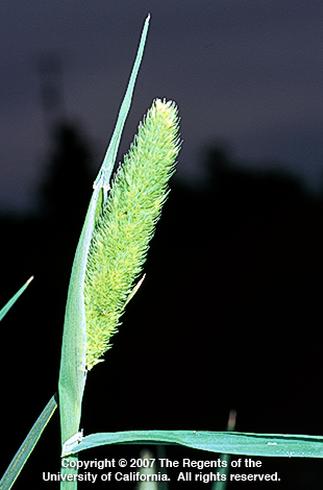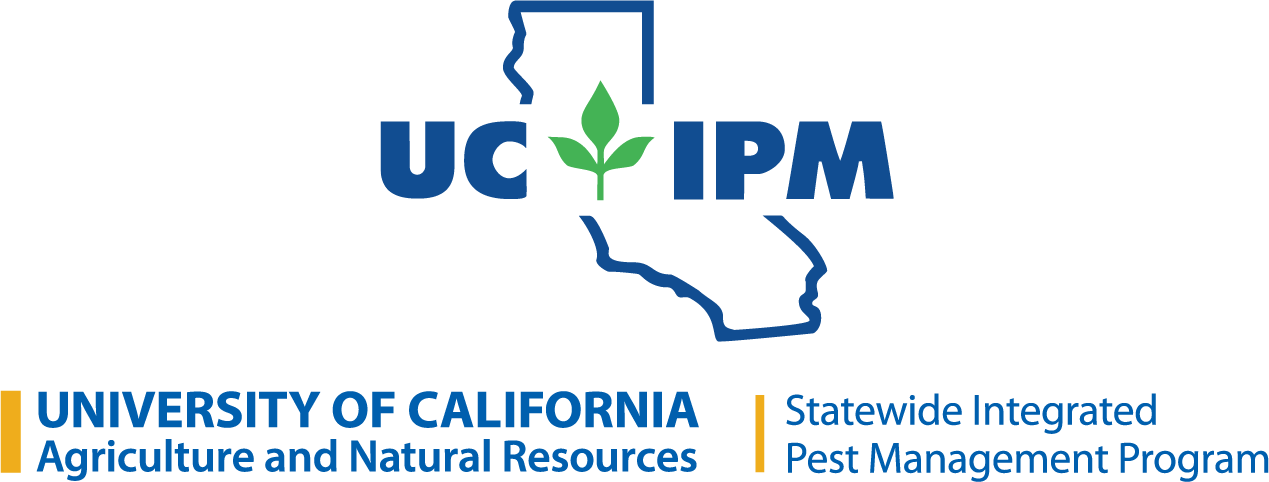Hood canarygrass is a winter annual grass found in the Central Valley, Sonoran desert, and Southwestern region of California up to 820 feet (250 m). Like its relative littleseed canarygrass, it is a common weed in grain fields, including rice.

Habitat
Hood canarygrass is found in winter crops, grain/rice fields, alfalfa fields, seasonally wet sites, moist and dry disturbed sites, roadsides, and ditch banks.
Seedling
Seedlings grow erect and have a characteristic red base. As tillers develop the seedling becomes semi-prostrate. Leaves are rolled in the bud.
Mature Plant
This tufted grass grows upright to 3-1/3 feet (1 m). Leaves are flat, hairless, and range from mostly 1/5 to 1/3 inch (5 to 7 mm) wide whereas the leaves of the similar littleseed canarygrass range mostly from 1/5 to 3/5 inch (5 to 15 mm) wide. However, both grasses can be as little as 1/12 inch (2 mm) wide. Stems are round in cross section. Sheaths are open, narrow, and membranous along the upper margins. However, sheaths enveloping the flowering stem frequently look inflated and usually enclose the lower portion of the flower clusters (inflorescence).
Collar Region
The collar is frequently pale. Auricles are absent. Ligules are membranous and delicate, usually 1/8 to 1/4 inch (3 to 6 mm) long, and truncate at the tip. Littleseed canarygrass ligules are typically 1/5 to 2/5 inch (5 to 10 mm) long and range from pointed to truncate at the tip.

Flowers
Flowers bloom from May through August. Tiny flowers cluster to form densely packed inflorescence along the top of the flowering stem. The inflorescence looks like a spike, but on a close look they are panicles because flowers tightly bundle along tiny branches. The spikelike panicle is more or less oblong and about 1-1/5 to 3-1/2 inches (3 to 9 cm) long and about 2/5 to 4/5 inch (1 to 2 cm) wide and its base usually tapers to an inflated sheath. Each spikelet cluster is composed of a fertile spikelet surrounded by 5 or 6 infertile spikelets that all detach as a unit (see photo above). The similar looking littleseed canarygrass panicles are 2/5 to 2-4/11 inches (1 to 6 cm) long and 2/5 to 1/12 inch (1 to 2 cm) wide and their spikelets detach separately.


Fruits
Fertile florets are lance shaped about 1/12 to 1/6 inch (2 to 4 mm) long and have 2 tiny scale-like sterile florets at the base.

Reproduction
Hood canarygrass reproduces by seed, which generally falls near the parent plant. Seeds disseminate to greater distances via agricultural equipment, soil movement, other human activities, water, and animals.

Related or Similar Plants
- Canarygrass, Phalaris canariensis
- Carolina canarygrass, Phalaris caroliniana
- Hardinggrass, Phalaris aquatica
- Littleseed canarygrass, Phalaris minor
- Rabbitfoot polypogon, Polypogon monspeliensis
- Reed canarygrass, Phalaris arundinacea
- Short-spike canarygrass, Philaris brachystachus
